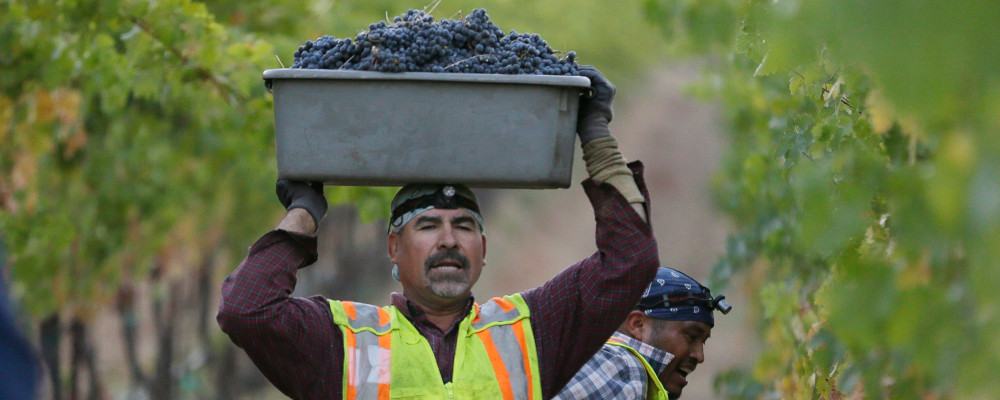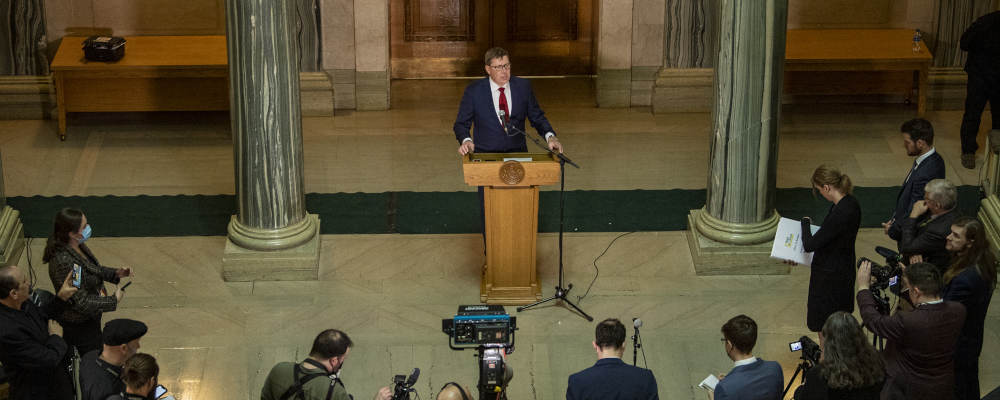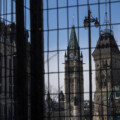I stopped counting how many wineries make up the Napa Vintners consortium in their directory when I reached 100. On another page on their website I found out there are more than 500. On the same page I found out that although the State of California is responsible for 81 percent of the USA’s wine production, Napa Valley only accounts for 4 percent of that, which is squeezed out of a landmass less than 50 kilometres long and only about 8 kilometres wide.
Despite its relatively small size, Napa Valley is a big brand. It was the first in the States to organize into an American Viticultural Area (AVA), the Yankee version of French appellations in 1968. If you stopped a person on the street anywhere in the wine-drinking world and asked them to name a Californian wine region, I think it’s a good bet that “Napa” or “Napa Valley” would be the first answer.
The modern history of Napa Valley wine might be said to have begun in 1966 when Robert Mondavi built a winery that would make his name a worldwide brand. Or, it might have been 10 years later at the so-called Judgement of Paris of 1976. Several films have been made about the competition set up by British ex-pat wine merchant Steven Spurrier and his American colleague Patricia Gallagher. It pitted California Chardonnay and Cabernet Sauvignon against Burgundy whites and Bordeaux reds in a blind-tasting contest mostly judged by French grandees of the wine world.
In retrospect, what’s surprising to a contemporary wine consumer is not that some of the California (mostly Napa) wines were deemed better than some of the French ones. The top wines in both categories were scandalously (to the French) American. Nearly half a century later, that no longer shocks and it’s a given that demand for top Napa wines rivals that for Bordelais and Burgundundian Grand Crus, as does their corresponding indicia, price.
What’s surprising is that the French judges couldn’t reliably tell the difference between the New World and Old World wines. The concept of terroir, the taste of a place, has long been a reliable marketing tool for French wines; where they came from was always the most important thing. That’s why one asks for Champagne and not sparkling wine.
This concept truly went global in the last two decades of the 20th century and the first two of this one. Not least in Napa Valley. The irony of the 1976 Judgement of Paris is that instead of discounting terroir, by questioning whether wines from the top vineyards in the top regions of France were really the best in the world it simply elevated another terroir into the top tier and encouraged the dreams of winemakers around the world that their region might also command that kind of respect.
It seems once the Napa winemakers had their terroir validated they then felt free to do their own Californian thing. By the late 80s or early 90s, I imagine most seasoned wine drinkers would have easily distinguished between American and French wines. If anything, the pre-global warming French hoped for a good year full of California sunshine.
I was thinking about this this week when the Napa Vintners came to Toronto to host a tasting for trade and media. Two of the Judgement wine wineries, in more recent vintages, were poured at the event: Freemark Abbey and Heitz Cellars. Chardonnay from the former was offered at the white wine walk-around that opened the event. The latter was featured in a sit-down tasting of 12 Cabernet Sauvignon from six Napa wineries. Mondavi wines from the famous To Kalon vineyard were featured in both, the white being his/their signature Fumé Blanc, which is the name under which they marketed Sauvignon Blanc in the 1960s, for fear that English speakers would trip up on the French.
Toronto-based globe-trotting Master Sommelier John Szabo played MC for the Cabernet Sauvignon tasting, which he explained was called Napa: Now and Then. Next to his dais, seated at a high table, were top executives representing the six wineries, including Heitz (Lawrence Wine Estates), Louis M. Martini (Gallo), Robert Mondavi, Trefethen, Spottswoode, and Cliff Lede.
The Now and Then theme referred to the pair of wines from each house, one between 10 and 15 years old, and one between four and five years old. The point, I think, was not so much to show variation in age, but more about styles in winemaking.
On the panel, Carlton McCoy, a master sommelier who runs Lawrence Wine Estates, which bought Heitz Cellars in 2018, and runs several other Napa wineries, made the point that since “Americans are an open-minded people” it was unlikely that the Napa Vintners would try and impose a particularly strict set of winemaking rules on the AVA. The wines would always be “vigneron driven,” and McCoy championed the idea that Napa wines meant to show “human expression” as much as terroir.
The 2008 Heitz Trailside Vineyard Cabernet Sauvignon, from the Rutherford sub-region, was compellingly Claret-styled with a dominance of cassis and a whisper of retained oak. The 2017 vintage of the same wine showed more red fruit, maybe a lighter style; less new oak, as is the fashion, and would have been more in line with the wines of the 1970s.

Nicholas Paris, a master of wine who is the director of wine and spirits education at E. & J. Gallo Winery, another modern California pioneering company, brought with him 2009 and 2019 Louis M. Martini Lot 1 Cabernet Sauvignon, both of which showed black fruit and hints of violet and mint; the older wine somewhat more mellowed and open. Martini is a winery that was established soon after Prohibition in the early 1930s, and Lot 1 sources grapes from sites across the Valley.
Two other wines of note were brought by Beth Weber Novak, whose mother and father bought the 19th-century vineyards at Spottswoode near St. Helena in the early 70s and whose mother Mary Novak reestablished the winery in 1982. The 2010 and 2020 Spottswoode Cabernet Sauvignon showed well for different reasons. The 2010 seemed like a classic cassis-driven Cab, elegant and silky in structure, to be lingered over long after dinner. The 2020 on the other hand was a bit of an outlier at the tasting, bursting with vibrant fruit energy ranging from red to black, compelling one sip after another.
I think it was Weber Novak who made the point that with the success of Napa wines in the late 20th century came money, and the money was used more often than not on new oak barrels. That tendency seems to be waning at some houses. And the younger wines shown mostly reflected this, although to varying degrees.
McCoy’s point is well taken. The success in the 1970s that established Napa Valley terroir has ultimately led to more freedom for the winemakers, in the field and in the cellar. Perhaps human expression is just a part of terroir after all. That sounds like a very Californian thing to say. Just don’t ask me how much any of the wines cost!
Recommended for You

Malcolm Jolley: Cool Chardonnays for warm days

Malcolm Jolley: The LCBO strike was a spectacular misstep

Malcolm Jolley: Doug Ford is right. The LCBO has long outlived its purpose

Malcolm Jolley: What is rosé anyway?










